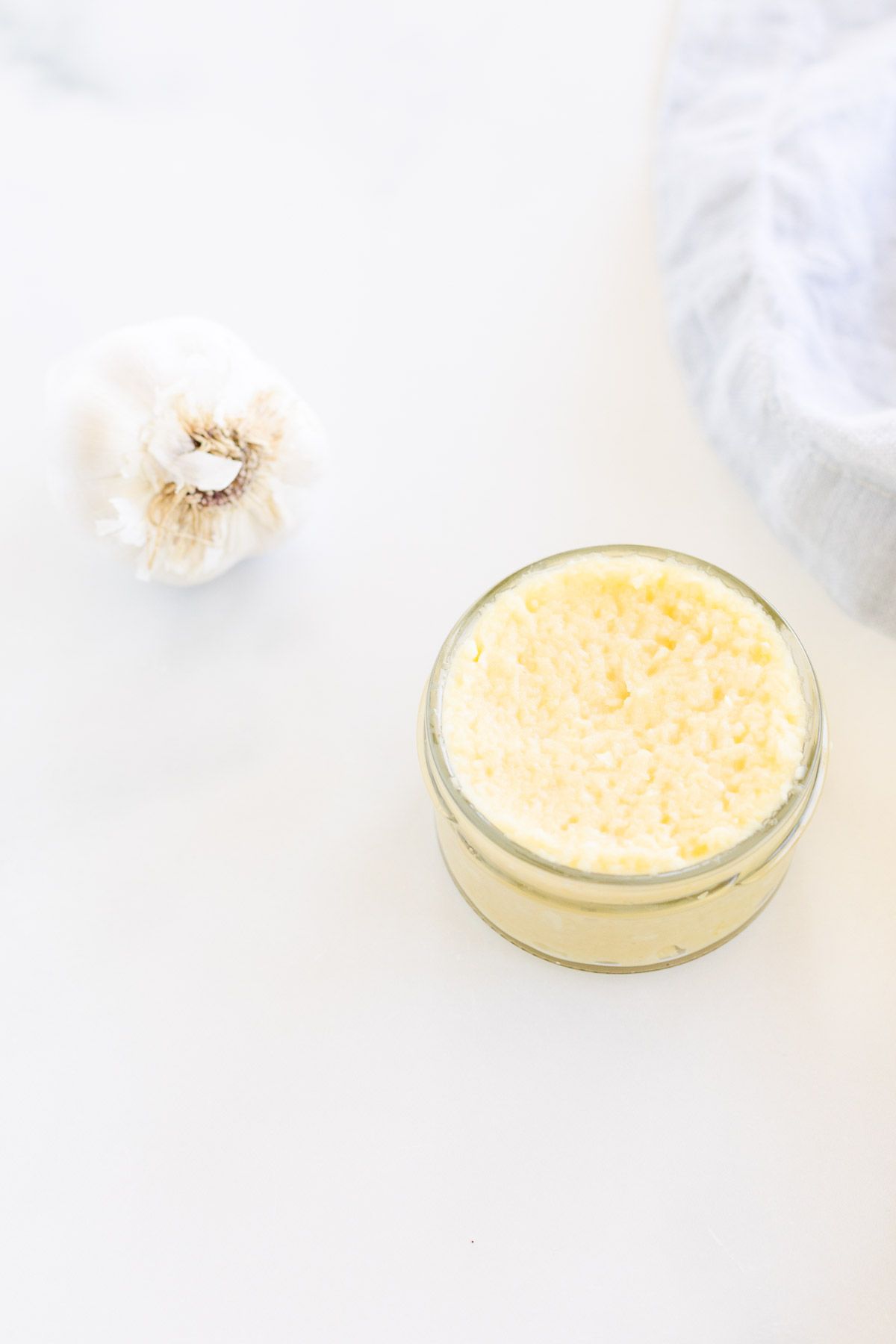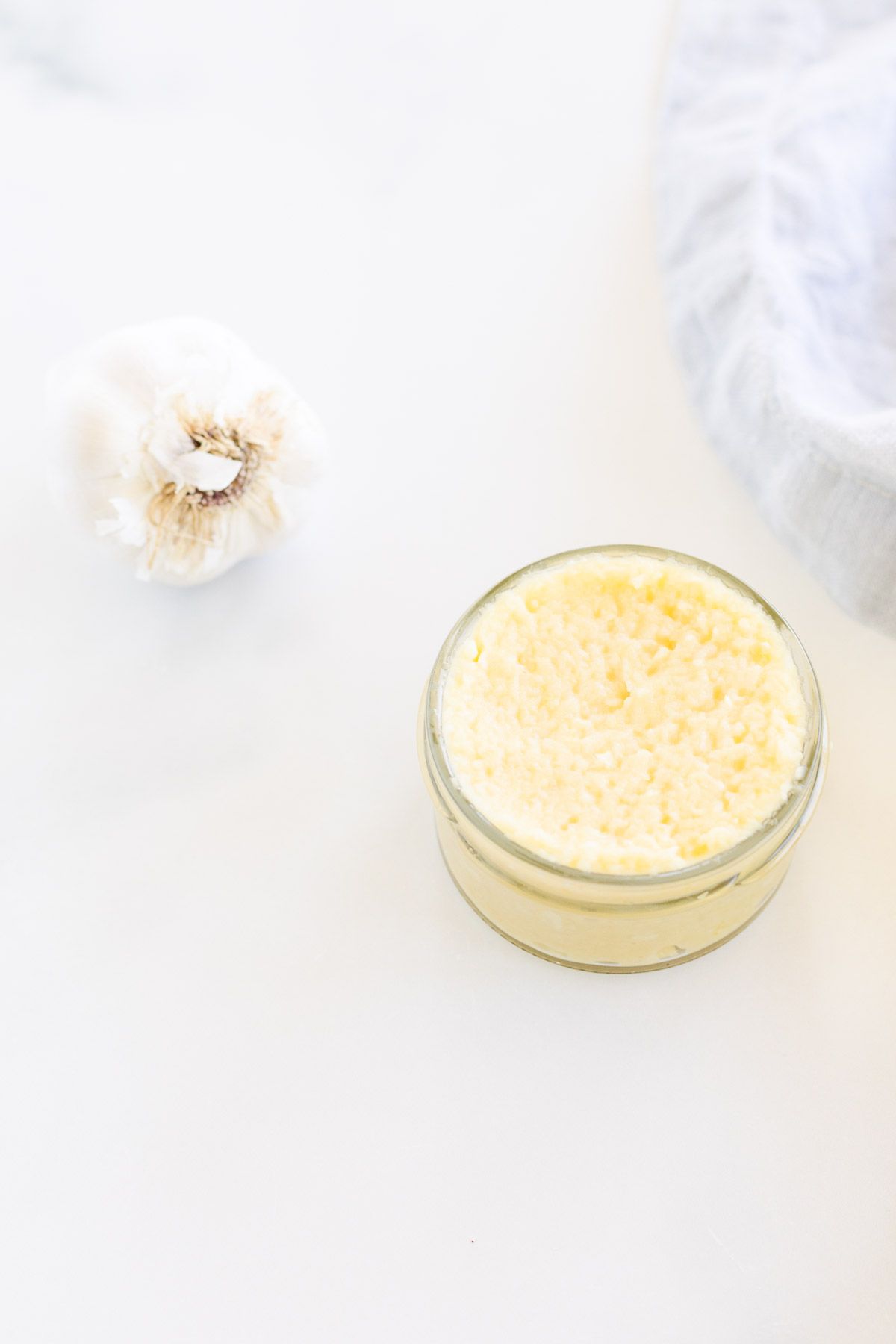
Learn how to make a fresh and incredibly easy garlic paste. This is a wonderful addition to so many recipes, and it’s sure to speed up your cooking time.
It’s easy to make, and even easier to make ahead and store!


You all know I’m a fan of shortcuts in the kitchen. There’s no shame to my game when it comes to certain tips and tricks I’ve been using for years!
One of those tricks is to buy pre-minced garlic in the produce section of your grocery store. Is it *as delicious* as freshly minced garlic? Of course not. But does it work in a pinch, or when you’re in a hurry? Absolutely!
I’m a realist, and I’m a mom of three. When it comes to busy weeknight dinners, I’ll take all the help I can get!
However, when I realized how easy and convenient it is to make my own garlic paste at home, it was a game changer! Why not make it ahead since it stores so well? It was like a light bulb when off in my brain.
We’ve chatted a lot about garlic in the past – I am a forever fan of this pungent addition to your cooking! It’s used throughout a vast array of cultural foods, and we especially love it in our Italian meals.
Learn how to peel garlic here and how to mince garlic here, and don’t skip my complete Garlic Conversion Guide! Garlic is a fabulously fragrant and flavorful addition to so many meals, and this little garlic paste trick might just change your life.
What is Garlic Paste?
My garlic paste recipe is simply a mixture of garlic cloves that are pureed with olive oil. It makes a fantastic make-ahead prep option that you can store and use whenever a recipe calls for garlic!
The best part? It stores beautifully! I’m going to walk you through the quick and easy process, and share storage guides too.
Why You’ll Love It
- Less Expensive than Store Bought
- More Flavor
- No Additives or Preservatives
- Incredibly Easy
- Stores So Well!
Ingredients and Substitutions
- Garlic Heads – Peel and cut down into individual cloves for processing. Learn How to Peel and Mince Garlic here.
- Olive Oil – We tend to have Extra Virgin Olive Oil on hand, so that’s what we used. Feel free to try an avocado oil or canola oil.
Variations
- Fresh Herbs – Parsley and chives are popular options.
- Seasoning – Add 2 teaspoons to 1 tablespoon of Italian seasoning.
- Black Pepper – Add thick flakes of fresh ground black pepper for even more flavor. Perfect when using on steaks and dinner rolls.
- Parmesan – Fold in 1/4 cup fresh grated parmesan.
- Lemon – add a teaspoon of fresh lemon juice for vibrant citrus flavor.
How to Make Garlic Paste in Just Four Easy Steps
- Peel garlic into individual cloves, chopping the ends to allow for a smooth garlic paste.
- In your food processor (or blender) add garlic cloves and oil.
- Blend until a smooth paste forms. Scrape down the sides as needed, eliminating any remaining chunks.
- Store in an airtight container in refrigerator or freezer as directed.
Tips
- One garlic clove equals approximately ½ teaspoon of garlic paste.
- Garlic paste is a little more concentrated than minced garlic, so be sure to use a little less paste if a recipe calls for minced garlic.
- If you’re adding frozen garlic paste to a recipe, it can be directly added to your recipe without thawing!
- Top your garlic paste with a thin layer of olive oil before refrigerating, which helps preserve it for longer.
Scaling up, down or substituting? You’ll love this printable Measurement Conversion Chart!
Frequently Asked Questions
No, it’s not quite the same thing – although it can be used interchangeably in many recipes. Minced garlic is garlic in tiny little uniform pieces, whereas garlic paste is completely pureed.
Garlic bulbs (also called a head of garlic) are the large white bulbs of garlic, covered in a papery skin, consisting of many individual garlic cloves. A traditional head of garlic will contain between 10 and 12 cloves.
Absolutely! Peel and finely mince peeled garlic, then sprinkle it with coarse salt to help break it down. Use the flat side of a knife to smash and drag the mixture on a cutting board until it forms a paste and mix with oil, or grind it in a mortar and pestle if available.
I prefer to use olive oil to make garlic paste because of its smooth texture, and it adds a bit of richness. But any neutral-flavored oils will work. Oils with strong flavor will overpower the taste of the garlic.
How to Store
- Room Temperature – Your homemade garlic paste can sit out at room temperature safely for up to two hours.
- Refrigerator – Store your garlic paste in the refrigerator in an airtight container for up to two weeks. *To preserve for even longer, add a thin layer of olive oil over the top of your container before sealing.
- Freezer – This is the easiest way to store your fresh garlic paste! Freeze it for up to four months. We like to freeze it (in 1-2 teaspoon quantities) in an ice cube trays for easy use – simply pop out a cube and you’re ready to go!
Dietary Considerations
- Gluten Free
- Nut Free
- Vegetarian
More Garlic Love
-
Peel garlic into individual cloves, chopping the ends to allow for a smooth garlic paste.
-
In your food processor (or blender) add garlic cloves and oil.
-
Blend until a smooth paste forms. Scrape down the sides as needed, eliminating any remaining chunks.
-
Store and use as directed.
https://julieblanner.com/wp-content/uploads/2022/09/garlic-paste-3-1.jpeg
2025-01-24 17:00:00